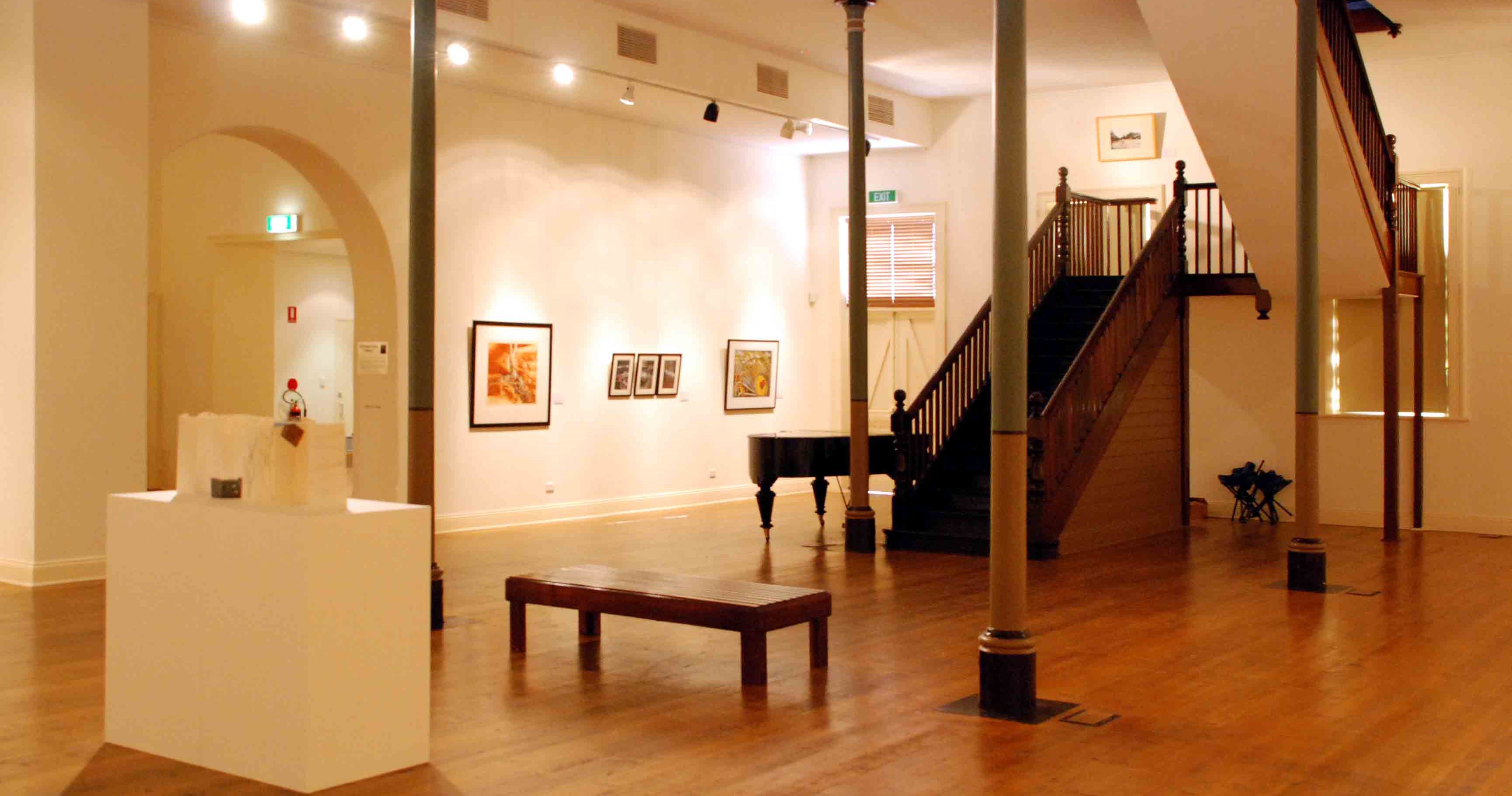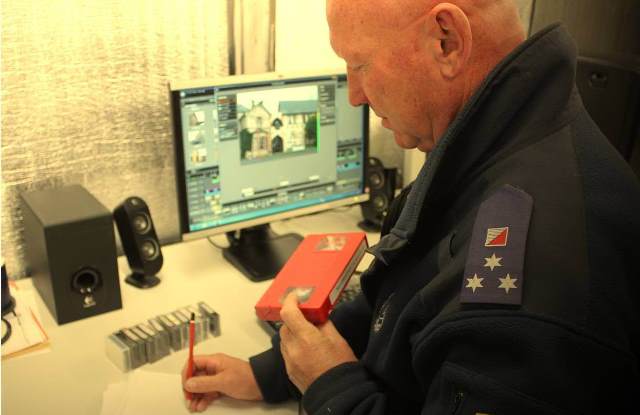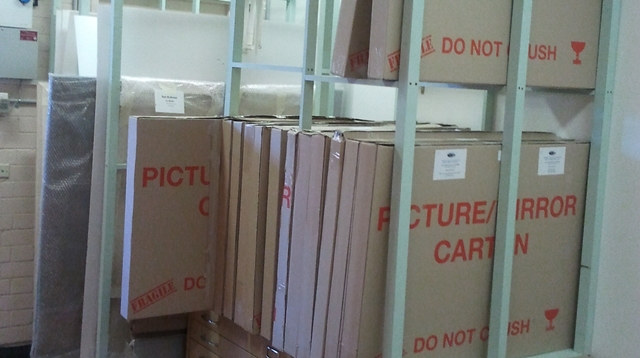Collection Management: 1-4 staff
Here are the 2012 Collection Management nominees for organisations with 1-4 paid staff.
The winner of this category was the Corrective Services Museum, Cooma for their digitisation project. Both Grafton Regional Gallery and the Sustainable Collections Project run by Orange, Blayney and Cabonne Councils won highly commended awards.
Please note that all of these lovely images are courtesy of the nominees.
Broken Hill Regional Art Gallery

Broken Hill Regional Art Gallery, main gallery.
The Broken Hill Regional Art Gallery collection was housed in less than ideal conditions with outmoded climate control and poor protection from the elements. The previous off-site arrangements made it hard to fully utilise the collection and extreme weather made it difficult to plan the transportation of works.
By building an extension to the existing building that included environmental controls, loading dock, crate store, office area, an area dedicated to the storage of works on paper, and sliding racks for paintings, the new storage space now meets the Gallery’s requirements. Staff have daily access to the collection, are able to research its history, manage conservation issues, develop new curated exhibitions and make all works available to researchers and educators.
Corrective Services Museum, Cooma

Leszek Strzelecki, State-wide Manager working on the digitisation project.
The Museum is the guardian of many significant documents, images and recordings, including execution warrants for well-known bushrangers and personal letters by the last woman hanged in NSW.
In August 2011 the need for an immense digitisation project gained momentum. After extensive research, installation of the necessary technology and staff training, the State-wide Manager and assistant undertook the mammoth task of digitising the Museum’s collection. The intense process demanded a “non-stop” approach of operation.
Whilst the digitisation project remains an ongoing commitment, most items were digitised in the first half of 2012. Much of the collection is delicate and fragile and may eventually perish. Through digitising they will survive for generations, at the touch of a button.
Grafton Regional Gallery

Grafton Regional Gallery's courtyard.
In 2004, the Cullen family gifted 37 photographs by John William Lindt (1845 – 1926), to the gallery. They included 34 of Aboriginal people and question of their identity was pursued by the Lindt Research Group, with the support of Aboriginal Elders whose lands lie within the Clarence Valley.
The Gallery employed historian Nola Mackey to research further and her report launched the Search for Identity project alongside an exhibition of the photographs.
A call to the community resulted in identifying three of the Aboriginal people and the descendants of one. This motivated Dreaming the Past: the Lindt Story, a 70 page full colour catalogue.
This project developed the significance of the photographs, provided exhibition development opportunities, included community involvement and created the outline for a future publication.
Newcastle Maritime Museum

Newcastle Maritime Museum interior.
Beginning in 2007, this project involved moving and cataloguing the Newcastle Maritime Museum collection. Many objects had no accession number or documentation and faulty records indicated there were only 2,000 objects in the collection. With the project close to completion, 6,500 items are now recorded and all objects have an accession number and have had their location recorded.
Ten people were trained in cataloguing, including preventative conservation, photography and numbering objects. Two volunteers have become proficient at dealing with rust and caring for organic materials.
Newcastle Maritime Museum wishes to recognise the work and passion of their volunteers, in particular three who have died in the past six months.
Shoalhaven City Arts Centre

Shoalhaven City Arts Centre art store facility, art racks
Shoalhaven City Arts Centre constructed an industry standard, climate controlled art storage facility. This was vital for valuable historic items including photographs and watercolours by both Samual Elyard and Jon Edward.
Because of this new facility, collection items can now be condition assessed, reviewed for exhibitions and easily accessed by researching educators. There is also now room to process and safely store incoming and outgoing exhibitions. Items are consistently photographed, updated in the database, digitised and made available on the Art Centre’s website.
The new facility was operational when a valuation of the collection was undertaken, assisting in a positive report from the valuer.
